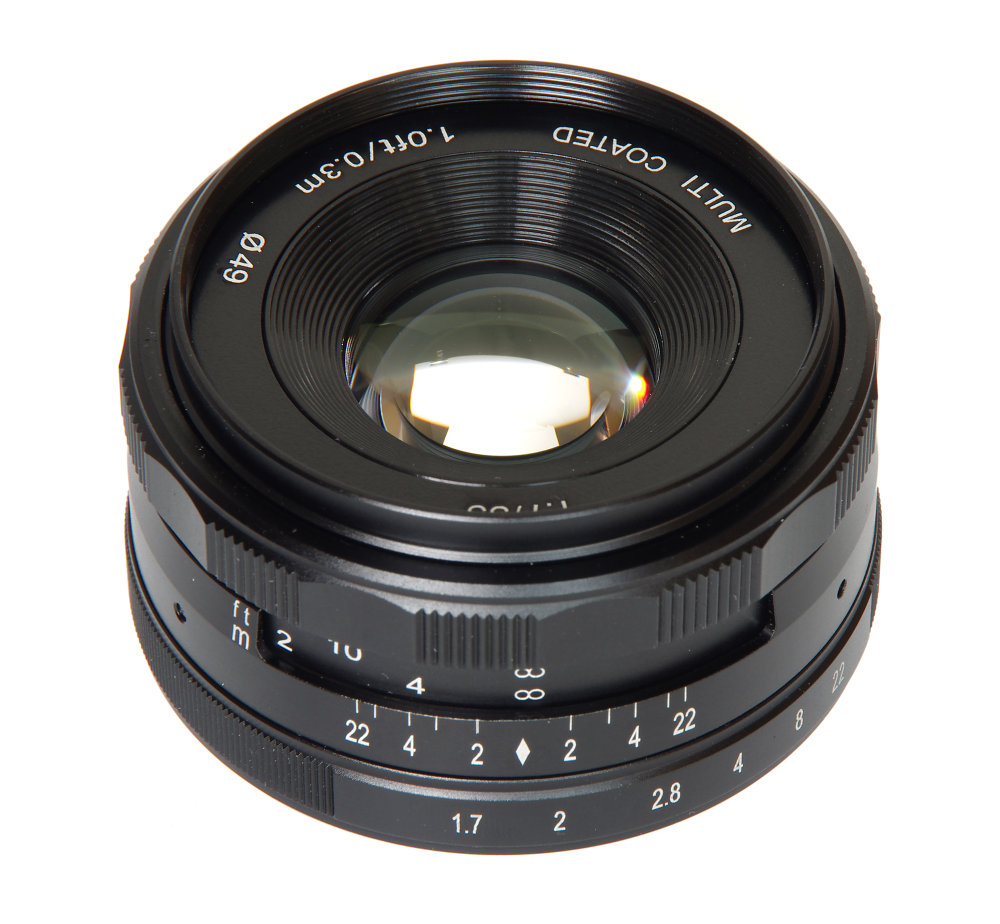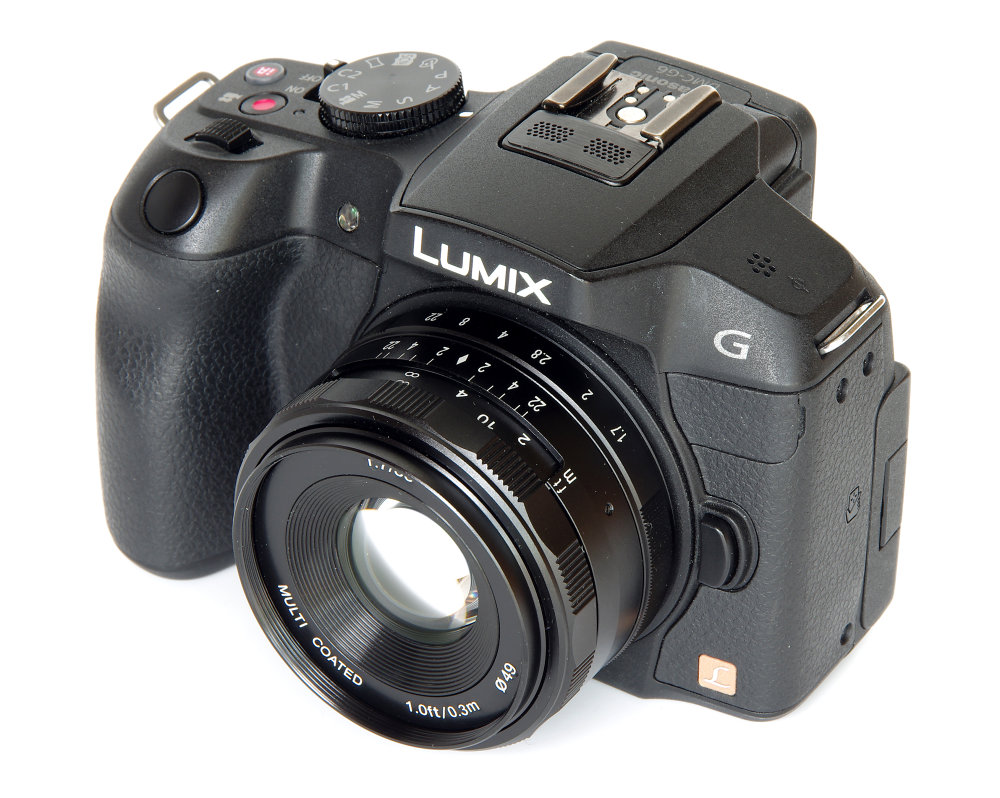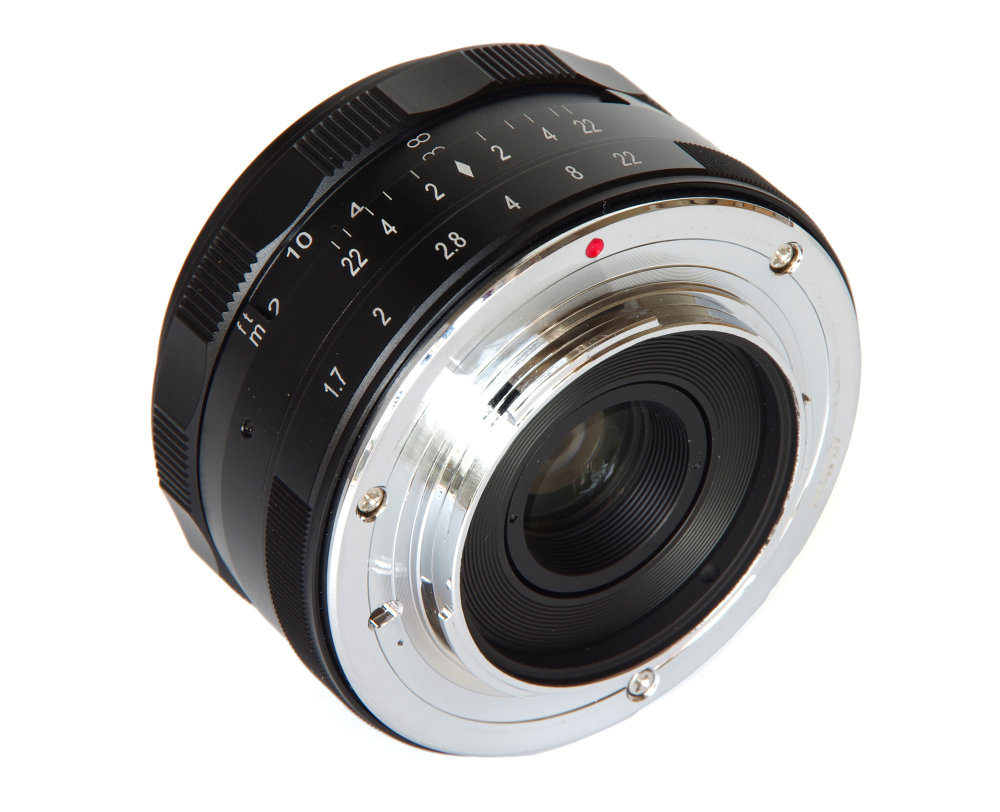Meike 35mm f/1.7 Lens Review
Meike 35mm f/1.7 Handling and Features
The lens is of metal construction and highly reminiscent of the Asahi Pentax Super-Takumar lenses of the 1960s. The knurled metal focusing ring looks very similar to those classic lenses, and the distance scale is found within a similar cut-out in the lens barrel. There is a depth of field scale provided and distances are marked in both feet and metres. Focusing is by helical thread, the whole optical unit extending forwards as we focus closer. The front element does not rotate, so use of polarising and graduated filters is much easier. A push on plastic lens cap is provided and this shows no signs of being likely to fall off in use.
The focusing action of the lens is just a whisker short of the delightful silkiness that some classic lenses have, which at this price level is commendable. The aperture ring is slightly firmer in action than the 50mm f/2 tested at the same time, but still smooth in operation. The overall finish of the lens is of a good standard.
The six element in five groups optics are multi-coated, closest focus is 1 foot (0.3m) and the lens takes inexpensive 49mm thread filters. Maximum magnification is 0.113x. The diaphragm has eight blades. Finally, the lens weighs just 172g.
The aperture ring is unusual. It has no click stops and remains closed to whatever value is set. This will be useful for video shooters but less so for those shooting stills. The progression of apertures marked is f/1.7, f/2, f/2.8, f/4, f/8 and f/22. There is no obvious advantage to this departure from the normal markings.
Although supplied for review in Micro 4/3 mount, the lens is marked as suitable for APS-C format. Accordingly, it is also available for other CSCs including Sony E mount, Canon EOS M mount, Nikon 1 series and Fujifilm X mount. The 35mm-format equivalent will be 70mm on Micro 4/3 cameras and around 50mm on APS-C. This is a useful short telephoto length or a standard lens for APS-C.
There is a highly polished metal mount, smooth and positive and matching the Panasonic Lumix G6 used for this review perfectly. There are no electronic contacts, so the camera does not know the aperture set. The Lumix G6 works fine in manual and aperture priority modes and meters correctly when the lens is stopped down.
In use, the lens is easy to focus, provided this is done at full aperture. There being no auto stop-down it is then necessary to turn the aperture ring to the desired setting. Unfortunately, the absence of click stops means that this is done by guess unless the camera is taken from the eye to look at the settings. With practice, this guess can be honed and could become quite accurate, but the precise value set will not be known unless constantly checked and noted.
Although the lens looks very much like a Super-Takumar from the 1960s, the focusing ring and aperture ring both work in the opposite direction to those lenses. This is something that becomes more important with manual focus in that, mixing lenses that work in opposite directions slows down the process of shooting. Otherwise, there are no handling issues and using the lens is a pleasure.
Add your message
Please login here or if you've not registered, you can register here. Registering is safe, quick and free.
photodo Stats
428 MTF tests
74 in-depth photodo reviews
100+ users join each day
Help the lens community by reviewing or rating a lens today via our lens search
Latest Lens Reviews
- Chinon 28mm f/2.8 Vintage Lens Review
- Canon EF 70-200mm f/4L IS II USM Lens Review
- Samyang AF 85mm f/1.4 EF Review
- Sigma 70mm f/2.8 DG Macro Art Review
- Samyang AF 24mm f/2.8 FE Review
- Meike 50mm f/1.7 Review
- Tamron 70-210mm f/4 Di VC USD Review
- Lensbaby Burnside 35mm f/2.8 Review
- Asahi Super Takumar 50mm f/1.4 Review
- Asahi Super-Multi-Coated Takumar 135mm f/3.5 Review



